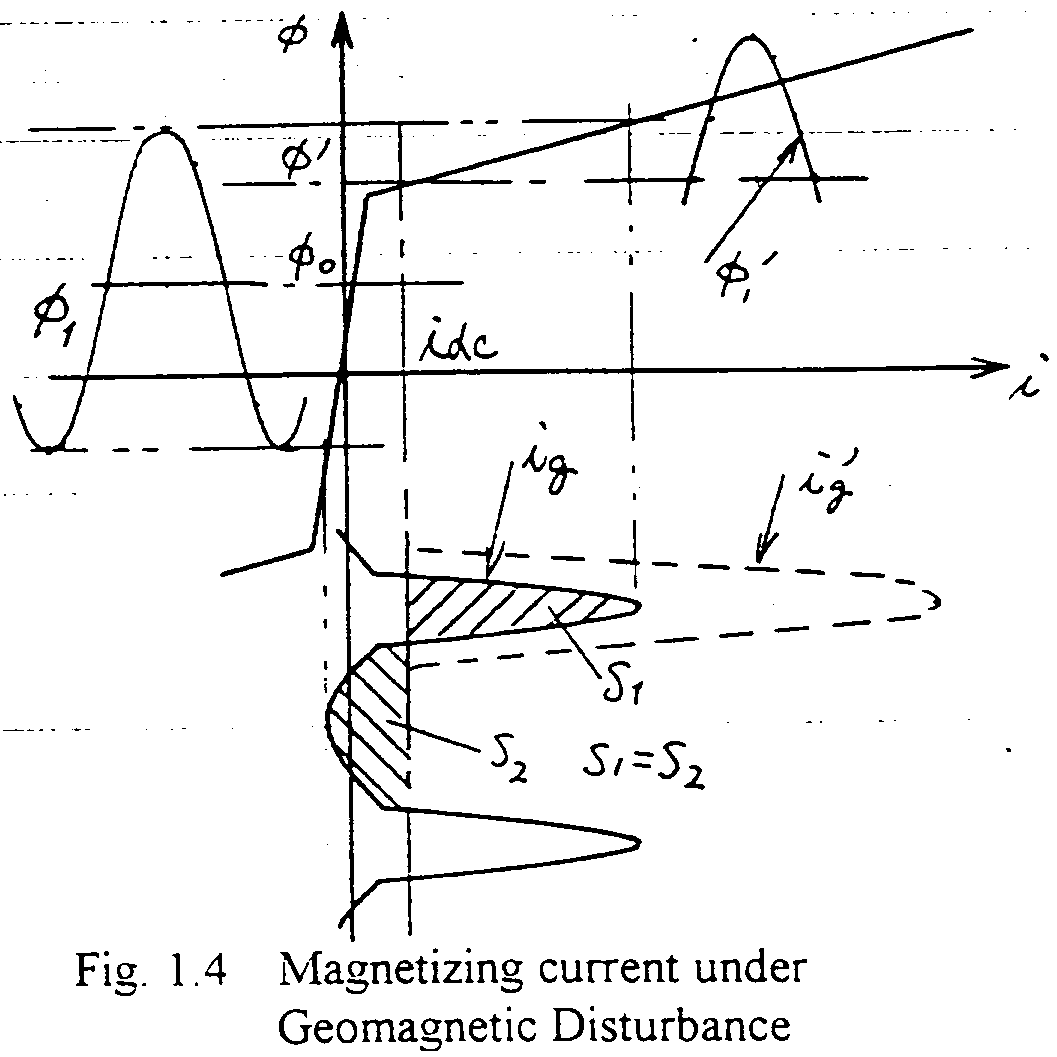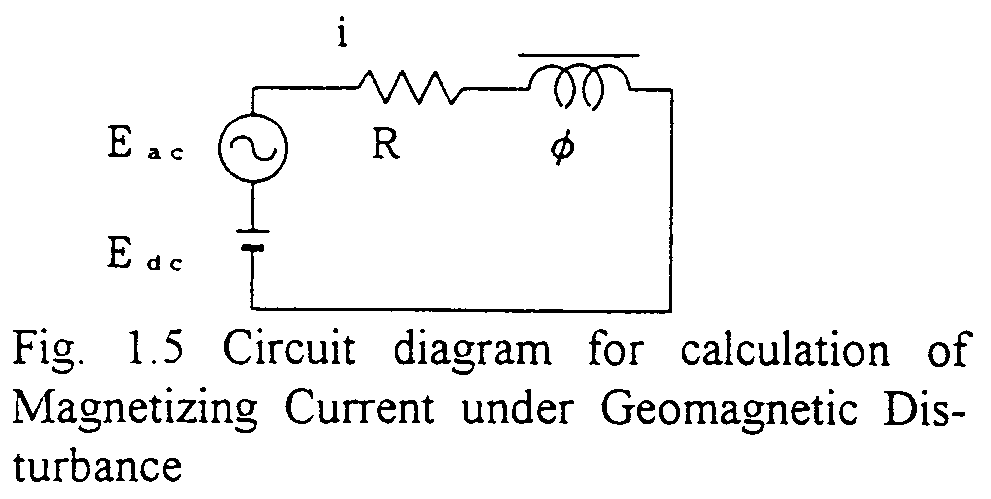Under Geomagnetic Disturbance Conditions which occur every c.a. 11-years, due to the quasi DC ground potential difference along transmission lines, DC currents flow in the transmission lines and terminating transformers. In 1989 such condition resulted in big electric power system disturbances (Blackout) due to the transformer overheating faults in Canada and USA.
Fig. 1.4 shows the current-flux relationship under such condition and the average value of the current is equal to the induced DC value.

where (in the previous figure),
-
F : Flux linkage (Wb-turn)
R : Resistance (including the ground)(W)

In Fig. 1.5 which is a primitive circuit diagram for the calculation, we can have equations:

Integrating for one period of ac for the first equation, considering the steady state conditions, i.e., the integration of Eac and df/dt are both zero, then we have the rest two equations. The left side of the third equation corresponds to the quasi DC created by the Geomagnetic Disturbance, and the right side means the average value of the current for one period, and both are equal each other. That means, the magnetizing current of a transformer under Geomagnetic Disturbance condition flows with the average of the induced DC value. In longest time, the current last 10 --- 20 minutes, and due to the leakage flux out of the iron core because of saturation, transformer overheat failure may be introduced. Attached is an example of EMTP calculation introducing the same magnetizing saturation characteristics of the transformer as in the case of inrush current calculation, and the peak value of the current is less than that in inrush case.